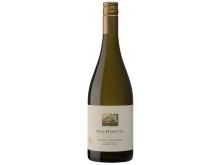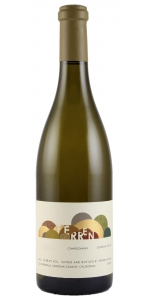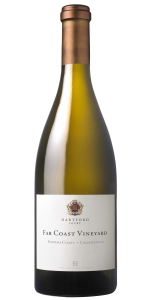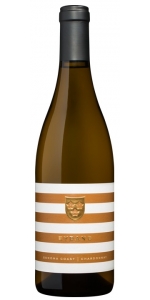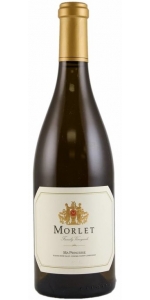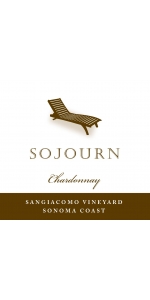MacRostie Wildcat Mountain Vineyard Chardonnay Sonoma Coast 2020
| Country: | United States |
| Regions: | California California (Sonoma County) |
| Winery: | MacRostie Winery |
| Grape Type: | Chardonnay |
| Organic: | Yes |
| Vintage: | 2020 |
| Bottle Size: | 750 ml |
Ferren Chardonnay Sonoma Coast is made from 100 percent Chardonnay.
The Sonoma Coast bottling is a blend of barrels from Ferren's single vineyard offerings; Lancel Creek, Silver Eagle, Volpert, and Frei Road Vineyards. The wine is always somewhat more approachable early in its life as less new oak is used in the blend. Pure and translucent fruit is the hallmark of this cuvée. Citrus, quince, sea spray, and minerals are buoyed by refreshing acidity and a seamless finish.
Hartford Court Far Coast Vineyard Chardonnay is made from 100 percent Chardonnay.
The 2019 Far Coast Vineyard Chardonnay exhibits aromas of orange zest, yellow apple, dried fruits, and spice. The flavors of tangerine, mandarin orange, and quince are followed by a long textural finish of minerals and delicate fruit.
Review:
This vineyard is located on a mountain ridge north of Fort Ross on the Sonoma Coast at 700 feet elevation, and the wine was aged for 14 months in 39% new French oak. The 2019 Chardonnay Far Coast Vineyard offers more lime citrus, saline minerality, and white peach, and the palate is fresh, energetic, and consistent with the nose. Texture-wise, it is markedly different, with more focused structure and tension.
-Jeb Dunnuck 96 Points
Bydand Chardonnay Sonoma Coast is made from 100% Chardonnay
Aged for 16 months in 30% new French oak, 70% neutral French oak
Farmed by one of California’s most respected and longest operating grape-growing families, the Roberts Road Vineyard is located in the Petaluma Gap. Sitting on well draining gravel soils, coastal winds allow for a long, slow and even growing season. Planted in 1998 these Dijon 95 grapes provide minerality and vibrancy to a full-bodied wine with impressive purity of flavor and mouth-feel. French oak barrels add subtle toast to aromas of pear, stone fruits and white citrus.
Ferren Chardonnay Sonoma Coast is made from 100 percent Chardonnay.
The Sonoma Coast bottling is a blend of barrels from Ferren's single vineyard offerings; Lancel Creek, Silver Eagle, Volpert, and Frei Road Vineyards. The wine is always somewhat more approachable early in its life as less new oak is used in the blend. Pure and translucent fruit is the hallmark of this cuvée. Citrus, quince, sea spray, and minerals are buoyed by refreshing acidity and a seamless finish.
Morlet Family Vineyards Ma Douce Chardonnay is made from 100 percent Chardonnay.
The cool maritime breeze and mild and sunny mountain climate create ideal conditions for this hillside vineyard located on the second ridge from the Pacific Ocean. Handcrafted using classical Burgundian winemaking techniques, this wine is dedicated to Jodie Morlet. It is ‘My Sweet’ or ‘Ma Douce.’
Full yellow color. Aromas of lemon drop, Crème Brulée and orange zest intermixed with strong notes of minerality (wet stones) and fresh hazelnut. Full-bodied, mineral driven, this wine displays a creamy texture and very long mineral finish. Built to age gracefully for a decade, this wine is already very approachable.
Propietary Name Ma Douce
Name Meaning My Sweet “Douce brize” from the Ocean
Varietal composition Chardonnay
Type of wine Vineyard designated
Appellation Fort Ross-Seaview
Vineyard singularity On the second ridge off Ocean High elevation Goldridge soil
Typical harvest date End of October
Picking Manual, small lugs, refer truck
Sorting Cluster by cluster
Fermentation In barrel through native yeast 100% Malolactic
Upbringing Sur lies with bâtonnage
French oak from selected coopers
Bottling Unfiltered
Cellaring time 5-10 years
Serving Slightly below room temperature Decanted when served young
Review:
"Lots of white peach, quince, white flower, and green almond notes emerge from the 2020 Chardonnay Ma Douce, a full-bodied barrel sample with beautiful depth as well as freshness."96 Points Jeb Dunnuck:
Sojourn Chardonnay Sangiacomo Vineyard is made from 100 percent Chardonnay.
The core of Sojourn Sangiacomo Vineyard Chardonnay is from the same vineyard source as the highly-acclaimed Sojourn Sangiacomo Vineyard Pinot noir wines. This wine features a combination of Clone 95 Chardonnay from Sangiacomo Roberts Road Vineyard and Old Wente Clone from Sangiacomo Vella Ranch. The Roberts Road block, planted in 1998, provides minerality and vibrancy. The Old Wente Clone selection is known to produce distinctively small clusters, low yields, and results in elegant, complex wines that round out this blend. These ranches are perfectly suited for growing Chardonnay, with cool climates and well-draining soils.
Sojour Chardonnay is fresh and lively, fruit-forward with bright acidity, stone fruit, citrus and apple flavors that leave your mouth watering.
MacRostie Wildcat Mountain Vineyard Chardonnay Sonoma Coast is made from 100 percent Chardonnay.
The 2020 Wildcat Mountain Chardonnay has an opulent golden straw color in the glass. As you swirl your wine, aromas of honeysuckle and spring wildflowers waft. There is a signature aroma of honey and the faintest of butterscotch that is the calling card of Wildcat Chardonnay. As you sip the wine, it is crisp, and right before you think it will be tart the acid melds with a rich and textured palate. There is a juxtaposition of bright acid and viscosity that continues to the finish, which is lively, fruity, satiny, and long.
Review:
Intense and distinctive, with hints of tarragon and lemon verbena adding appealing aromatic details to the core of fresh Fuji apple, melon and dried pineapple. A note of white pepper minerality lingers on the finish. Drink now through 2032.
-Wine Spectator 92 Points
Over the past three decades, MacRostie Winery and Vineyards has established itself as one of the Sonoma Coast’s defining wineries, and a leader in a bright, balanced and age-worthy style of Chardonnay and Pinot Noir. Today, MacRostie is guided by Sonoma County visionary and winery founder Steve MacRostie, and talented winemaker Heidi Bridenhagen, who together are making the finest wines in the winery’s storied history.
Using grapes farmed by legendary winegrowing families including the Duttons, Sangiacomos, Martinellis and Bacigalupis, and from Steve’s own Wildcat Mountain Vineyard, MacRostie’s Sonoma Coast wines have established themselves as benchmarks, offering a rare intersection between labor-intensive small-lot winemaking, fair pricing and the complexity that can only be achieved by working with the finest vineyards.
Though founded in 1987, the seeds for MacRostie Winery and Vineyards go back to 1974—to the early days of Sonoma County winemaking—when Steve began his career at Hacienda Winery. At a time when most California winemakers were fixated on Bordeaux varieties and Napa Valley, Steve and a handful of other pioneers took a different path, embracing the fog-shrouded vineyards of Sonoma County and their untapped potential for producing some of the finest Chardonnay and Pinot Noir in the world. Steve quickly gained renown as a winemaker capable of making exceptional Burgundian-variety wines. He also began to develop his own style, favoring crispness, complexity and vineyard character, as opposed to overt opulence.
In 1987, Steve established MacRostie. To make his earliest wines, he reached out to growers he knew and respected—leaders of Sonoma County winegrowing, like the Sangiacomo family. MacRostie’s wines were soon widely hailed for their unique balance of cool-climate structure and vibrant fruit. In 1992, years before the modern Pinot Noir boom, MacRostie added Pinot Noir to its portfolio, and quickly developed a devoted following for the pure and elegant style of these wines.
Several years later, inspired by a desire to cultivate his own great piece of land, Steve discovered an amazing mountainside ranch in the Petaluma Gap region on the borderlands of the Sonoma Coast. Planted to Steve’s specifications, this windswept site has become Wildcat Mountain Vineyard, and the cornerstone of the winery’s vineyard program. At the same time, in its drive to represent the entirety of the Sonoma Coast, MacRostie has continued to explore ever-farther west, to sites like Dutton Ranch and Goldrock Ridge, just a few miles from the Pacific Ocean. To capture the rich expressiveness of the entire appellation, MacRostie works with more than 30 Chardonnay vineyards and over 15 Pinot Noir sites—a remarkable level of diversity for a small winery.
In 2015, MacRostie unveiled its new state-of-the-art Pinot-focused winery and MacRostie Estate House on Westside Road in the Russian River Valley, which is also the home to Thale’s Vineyard, named after Steve’s wife. “I have always wanted a home for MacRostie that expresses who we are as a winery and what we believe in as clearly as our wines do,” says Steve. “Our new home in the Russian River Valley is a culmination of everything we have learned over our first quarter century, and a statement about who we plan to be over the next 25 years.”
- back
Laurent-Perrier Grand Siecle No. 26 is a blend of 58% Chardonnay, 42% Pinot Noir
white gold in color with delicate and persistent bubbles, Grand Siecle No. 26 offers a very complex nose which mixes honeysuckle, lemon, clementine and fresh butter aromas, followed by notes of hazelnut and a touch of honey. The feel in the mouth is very delicate and fresh with candied lemon and fresh hazelnut aromas. The palate is silky and mineral with notes of honeysuckle, flaked almonds and clementine.
It pairs with high quality produce and refined dishes, including shellfish, noble fish and white meats such as Thai style langoustine tartare and fine roasted poultry.
- 3 exceptional years chosen for their complementarity among the rare Laurent‑Perrier vintages.
- A majority of Chardonnay complemented by Pinot Noir from a maximum of 11 Grands Crus out of the 319 Crus in the Champagne region.
- Aged for 10 years on the lees for the bottle format and a few more years for the magnum format.
Vintage in Champagne is usually synonymous with excellence for Prestige Cuvées. Contrarily, Laurent‑Perrier believes that only the art of assemblage can offer what nature can never provide, that is, the perfect year.
The expression of the perfect year is that of a great champagne wine that has long ageing potential and over time develops depth, intensity and aromatic complexity yet retains its freshness and vibrancy.
Since 1959, Grand Siècle has been revealed only 26 times in bottle format and 23 times in magnum.
The « Grand Siècle » (Great Century) is the name given to one of the most prosperous periods (17th century) in the history of France known for the capacity of man, through his works, to create what nature cannot. Louis XIVth, known as the « Sun King », by creating the « Château de Versailles » and its gardens, was the architect of this model of harmony, balance and perfection.
The symmetry and perspective of the « Jardins à la française », the capacity to grow Mediterranean fruits (especially Oranges inside the « Orangerie ») in such a Northern climate, creating the Grand Canal, the fountains and ponds with no nearby rivers are many illustrations of this ability of man to sublimate natural elements. The name of Grand Siècle was chosen for Laurent‑Perrier’s Prestige Cuvée based on this common vision to reach a perfection that Nature, on its own, cannot provide.
Review:
This is really something. Electric on the palate. The aromas are so complex with sliced fresh and dried ginger, subtle pie crust, tarte tatin and hints of nutmeg with some salted caramel. Toasted bread, too. Always subtle. The palate is full- to medium-bodied yet hemmed-in with a freshness and balance that draws you back. Savory and vibrant. It's full of energy. Spectacular. Fascinating. Symphonic blend of 2012, 2008 and 2007. 65% of the 2012, 25% of the 2008 and 10% of the 2007. Eight grand cru. Chardonnay 58% and 42% pinot noir. Disgorged February 2023. 10 years on the lees. 7g/L dosage.
-James Suckling 100 Points
Johann Michel Cuvee Grain Noir is made from 100 percent Syrah
This is delicious. Expressive, deep, rich, silky and juicy.
Well structured and round, it displays red fruit, leather, black cherry, liquorice and black berry aromas.
This Cornas is a blend from 2 different vineyard sites:
- 60% of the final blend is coming from vineyards located on the hillside (16 year old vines on the "coteau") which is planted on sandy soils, decomposed granite and some roicks, giving the strucutre, the spiciness and the licorice type of flavors to the blend.
- the other 40% of the final blend is coming from the bottom of the slope (40 years old vines on the "pied de coteau") which is planted on sandy soils, bringing acidity and balance to the wine.
Manual harvest, selection of the grapes, 100% destemming, fermentation in tanks for 3 weeks, daily remontage and pigeage.
Malolactic fermentation in oak barrels and aging on the lees for 12-18 months in barrels (2 to 4 year old barrels)

